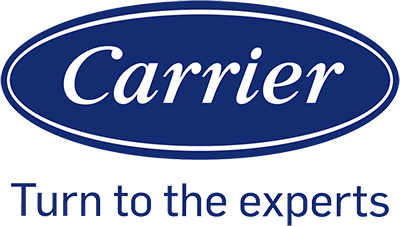Indoor air quality affects our health more than we often realize. Dust, pollen, mold, and other pollutants can build up in our homes and spread through the air ducts. Regular air duct maintenance helps reduce these pollutants and keeps the air we breathe cleaner.

When we take care of our air ducts, we limit how much dirt and debris circulate through our living spaces. This simple step supports a healthier environment and makes it easier to manage allergies and other sensitivities.
As we look at how air duct maintenance works, we will also cover the best practices for keeping ducts clean, the benefits of staying consistent, and other strategies that strengthen indoor air quality.
How Air Duct Maintenance Reduces Indoor Pollutants
When we maintain our air ducts, we help limit the buildup of harmful particles that circulate through our homes. Clean ducts support better indoor air quality, reduce common health issues, and make it easier for us to breathe.
Role of Air Ducts in Indoor Air Quality
Air ducts move heated or cooled air through our home. If they stay clean, they deliver fresh and filtered air. If they collect dust and debris, they spread pollutants into every room.
Ducts connect directly to our HVAC system, which already filters air through screens or filters. But when ducts themselves hold dirt, even good filters cannot stop particles from reaching us.
Routine cleaning prevents this spread. By removing buildup inside the duct walls, we keep air moving freely and reduce the number of pollutants entering our living spaces. This makes a direct difference in how clean the air feels at home.
Types of Pollutants Accumulating in Ducts
Several pollutants settle inside ducts over time. Common examples include:
- Dust and dirt from daily activities
- Pollen tracked indoors from outside
- Pet dander from cats, dogs, and other animals
- Mold spores from moisture in the system
- Bacteria and microorganisms that grow in damp areas
These particles stick to duct surfaces and then break free when air flows through. Larger debris may stay inside, while smaller particles circulate back into the rooms where we breathe.
Moisture makes the problem worse. Even small leaks or condensation can lead to mold growth, which spreads spores throughout the home. This can create musty odors and add to health concerns.
Impact on Allergies and Respiratory Problems
Pollutants inside ducts affect people differently. For those with allergies, even small amounts of pollen or pet dander can trigger sneezing, watery eyes, or congestion.
Dust and mold spores can also irritate the lungs. People with asthma or other respiratory problems may notice more frequent flare-ups when ducts stay dirty. Clean air ducts lower these risks by reducing the number of irritants entering the air we breathe.
Children, older adults, and anyone with weak immune systems are often more sensitive. Keeping ducts clean helps us protect them from unnecessary exposure to harmful particles. This makes our home a healthier place to live for everyone.
Essential Air Duct Maintenance Practices

We keep our indoor air cleaner by checking ducts often, removing buildup, and controlling moisture. These steps help our HVAC system work better and reduce pollutants that can affect health.
Regular Inspection and Cleaning
We should inspect our air ducts at least once a year to spot early signs of problems. Common issues include dust buildup, loose connections, and signs of moisture. Regular checks let us deal with small concerns before they grow into bigger repairs.
Cleaning ducts every few years keeps dust and debris from spreading through the home. When we clean, we focus on vents, registers, and the main duct lines. This prevents particles from circulating and keeps the HVAC system running more efficiently.
Professional cleaning may be needed if we notice visible dust blowing from vents, unexplained allergies, or reduced airflow. A trained technician uses specialized tools to reach deep into the ductwork and remove buildup.
Inspection checklist:
- Look for visible dust near vents
- Check for musty odors
- Watch for uneven airflow
- Inspect for loose or damaged duct sections
Addressing Dust, Debris, and Blockages
Dust and debris collect inside ducts over time. If left unchecked, they restrict airflow and force the HVAC system to work harder. This can raise energy costs and shorten equipment life.
We should vacuum around vents and registers often to reduce buildup. Using a high-efficiency air filter also helps trap particles before they reach the ducts. Filters should be replaced on schedule, usually every 1–3 months.
Blockages from objects, pests, or heavy debris can stop air from moving through certain ducts. Signs of a blockage include weak airflow in one room or unusual noises in the ductwork.
When we suspect a blockage, we should call a professional to clear it safely. Trying to remove it ourselves with sharp tools can damage the ducts.
Preventing Mold and Mildew Growth
Moisture inside ducts creates the perfect environment for mold and mildew. This not only affects air quality but can also spread spores through the home.
We prevent growth by keeping ducts dry and sealing leaks in the system. Poorly sealed joints or condensation around cooling coils often lead to moisture problems.
Using a dehumidifier in damp areas of the home lowers humidity levels. We should also make sure the HVAC system drains properly and that drip pans remain clean and empty.
If we notice musty odors, visible spots inside vents, or increased allergy symptoms, mold may be present. In that case, professional cleaning and disinfection are necessary to remove contamination and stop it from returning.
Benefits of Maintaining Clean Air Ducts
Clean air ducts help us breathe healthier air, reduce the strain on our HVAC system, and keep our energy bills under control. Regular care also supports better airflow throughout the home, which improves comfort and lowers the risk of costly repairs later.
Improved Air Quality and Ventilation
When dust, pollen, and pet dander build up inside ducts, they circulate through the home each time the system runs. This can make the air feel stale and trigger allergies or breathing issues. Clean ducts reduce these pollutants and support fresher indoor air.
Good ventilation depends on clear pathways for air to move. Blocked ducts restrict airflow, which can create hot or cold spots in different rooms. By removing debris, we allow air to reach every space more evenly.
We also limit the spread of mold spores when ducts stay clean and dry. Moisture combined with dust can create a breeding ground for mold, which affects both air quality and health. Keeping ducts free of buildup reduces this risk.
Key benefits for air quality and ventilation:
- Less dust and allergens
- More consistent airflow
- Reduced chance of mold growth
Enhanced Energy Efficiency and Lower Bills
A clogged duct system makes the HVAC unit work harder to push air through. This extra effort uses more electricity or gas, which raises monthly energy bills. Clean ducts help air move freely, so the system runs with less strain.
Better airflow also means the home reaches the set temperature faster. This prevents long cycles of heating or cooling, which saves energy. Over time, these small improvements add up to noticeable savings.
We can also expect fewer sudden spikes in energy use. When ducts are clear, the system maintains steady performance without wasting power. This keeps our home comfortable while keeping costs predictable.
Comparison of duct condition and energy use:
| Duct Condition | Energy Use | Bill Impact |
|---|---|---|
| Dirty/Clogged | Higher | Increased |
| Clean | Lower | Reduced |
Prolonged HVAC System Lifespan
When ducts stay dirty, the HVAC system works harder than it should. This extra strain wears down parts like the blower motor and fan. Over time, the added stress can shorten the system’s lifespan and lead to expensive repairs.
By keeping ducts clean, we reduce the workload on the entire system. The equipment runs more smoothly, which helps prevent overheating and mechanical breakdowns. This means we can use the same system longer before needing a replacement.
Routine duct care also supports regular maintenance checks. When technicians see clean ducts, they can more easily spot other issues, such as leaks or damaged components. This allows us to fix small problems early and avoid major failures.
Main advantages for system lifespan:
- Less strain on mechanical parts
- Fewer repair needs
- Longer use before replacement
Additional Strategies for Reducing Indoor Pollutants
We can lower pollutant levels inside by using devices that clean the air and by improving how fresh air flows through our home. Both steps work together to reduce dust, allergens, and chemical buildup.
Complementary Use of Air Purifiers
Air purifiers help us capture particles that duct cleaning alone may not remove. Many models use HEPA filters to trap dust, pollen, and pet dander. Some also include activated carbon filters that reduce odors and gases such as smoke or volatile organic compounds (VOCs).
We should place purifiers in rooms where we spend the most time, such as bedrooms or living areas. A single unit rarely covers an entire house, so using more than one may be necessary.
When choosing a purifier, we need to check the Clean Air Delivery Rate (CADR). This rating shows how quickly a unit removes particles from the air. A higher CADR means faster cleaning.
Regular filter changes are critical. A clogged filter reduces performance and may release trapped particles back into the room. Most manufacturers recommend checking filters every 3–6 months.
Proper Home Ventilation Techniques
Good ventilation reduces pollutant buildup by bringing in fresh outdoor air and pushing stale air out. We can improve airflow by opening windows when weather allows and by using exhaust fans in kitchens and bathrooms.
Mechanical systems such as heat recovery ventilators (HRVs) or energy recovery ventilators (ERVs) provide steady fresh air without wasting energy. These systems exchange indoor and outdoor air while maintaining indoor temperature balance.
Simple steps also make a difference:
- Keep vents unblocked by furniture.
- Run ceiling fans to help distribute air.
- Clean exhaust fan covers to maintain airflow.
Balanced ventilation helps us lower humidity, reduce mold growth, and limit the spread of indoor pollutants. It also supports the work of air purifiers by preventing trapped air from circulating pollutants.




